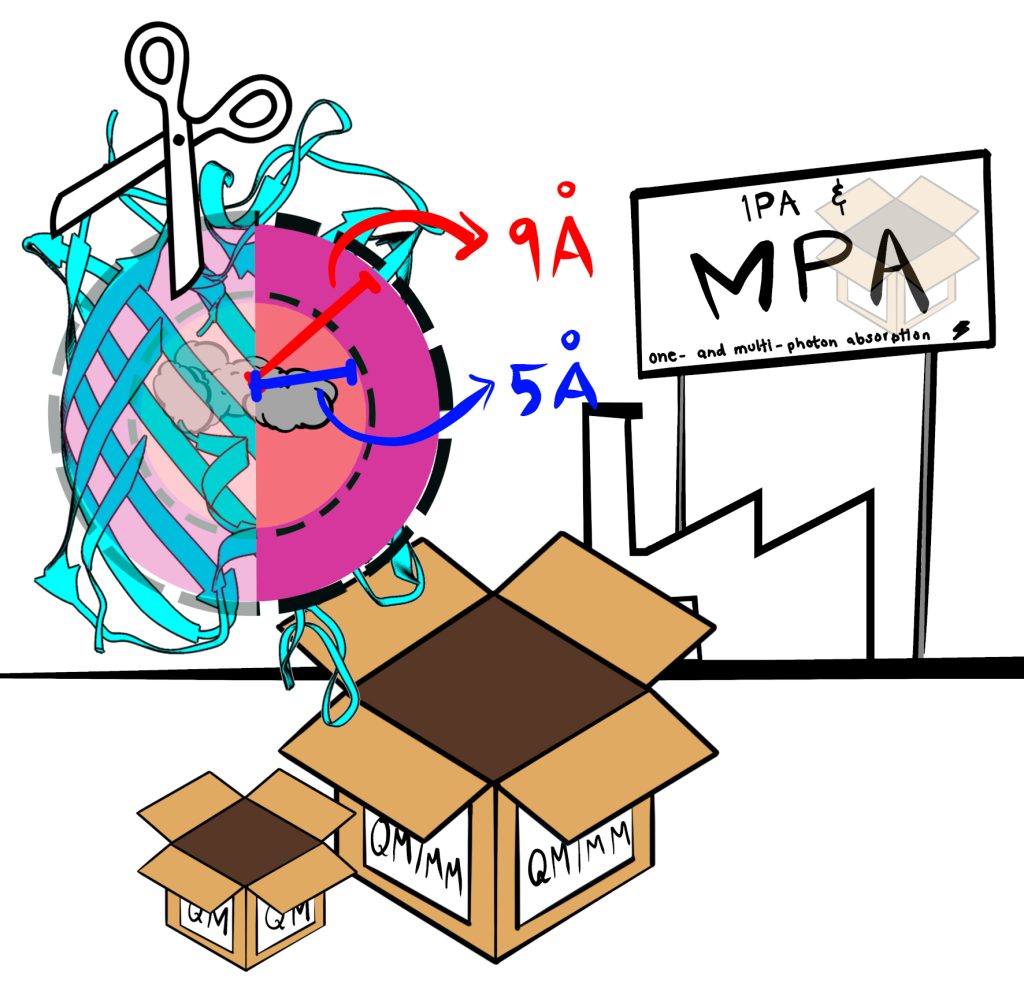Quantum Mechanical/Molecular Mechanical Studies of Photophysical Properties of Fluorescent Proteins
Light-responsive proteins are widely employed in bioimaging, for example, fluorescent proteins (FPs), which are comprised of a chromophore centered within a barrel-shaped protein. FPs exhibit remarkable one- and multi-photon absorption (1PA and MPA, respectively) in addition to their emissive properties. Over the last two decades, many types of quantum mechanical, molecular dynamics, and combined quantum mechanical/molecular-mechanical (QM/MM) approaches have been employed in the study of the photophysics of FPs. Among the latter, QM/MM approaches have proven to be capable of capturing the strong correlation between FPs’ light-responsive properties and their chromophore–environment interactions. In particular, polarizable embedding QM/MM methods are gaining attention by reason of their outstanding performance in the computation of MPA in FPs. Herein, we discuss the outcomes of some of the investigations performed on the 1PA, MPA, and emissive features of FPs using QM/MM approaches. In addition, critical aspects of the use of QM/MM approaches to study FPs’ 1PA and MPA features are described. To those researchers interested in starting to perform MPA computations for FPs using QM/MM methods, this review aims to be a compass to navigate among the relevant available literature.

